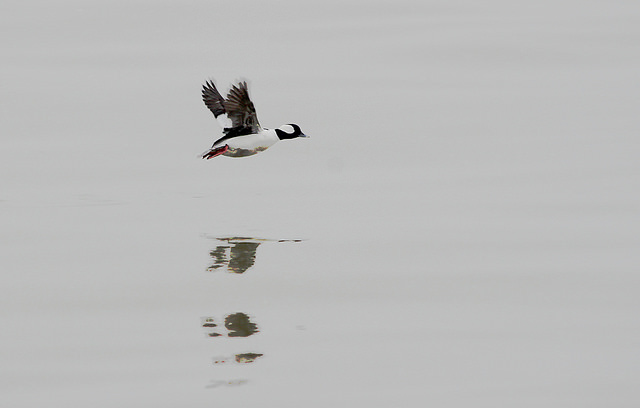The wind off of the lake carries a special kind of cold with it. This cold pushes through every crack in your clothing, freezes nostrils shut and burns the lungs in a way that only a lake wind can. Hands freeze into claws while awareness of toes fades and is replaced by an odd, icy burning in the calves. It is a Lake Erie kind of winter wind, and I love it.
Winter is a time for Audubon naturalists to roam across the countryside. We teach students from tiny towns on the edge of Pennsylvania’s Allegheny National Forest all the way up to the shores of Lake Erie in New York. Each day brings a new town, a new school, and new things to see along the way there. Last week, I had the opportunity to teach in Chautauqua Lake Elementary School near Mayville, NY. Though the kids are great and I love the teachers, I was most excited about going north to visit Lake Erie after the school day was done.
The drive down the hill through blowing and drifting snow took longer than I thought, but it was worth it. In a few minutes, the car was parked and I was walking along the beach. Chunks of ice floated up and down, with a few frozen dunes along the lake shore.

Photo by Jeff Tome The ice can form spectacular shapes along the edge of the lake.
My parents taught me that walking on ice dunes is dangerous. They can be hollow and people fall through every year and sometimes die. I walked along the edge, admiring the odd shapes the ice made and getting mildly hypnotized by the ever changing patterns in the broken ice chunks as the waves rose and fell.
Beyond the ice was what I really came for: birds. Lake Erie has birds on it in the winter that are hard to see at any other time of year. These were so far out that I could just make out their dark shapes as the birds dove under the water.
Diving ducks can hold their breath for a couple of minutes, searching under the icy water for fish and tadpoles. They congregate on the calm, unfrozen waters near the shore in winter. Barcelona Harbor has a bunch of interesting ducks, but Dunkirk is the place I associate with having an amazing selection of ducks.
Why go look at a bunch of ducks? It’s a valid question. A few years ago, I would not have made the extra little drive to watch a bunch of birds. Now, the sheer variety of shapes, sizes, beauty and peculiar oddities of ducks that are visible from up close make it worth the trip.

Photo by Jeff Tome Odd and interesting ducks, like this Whitewinged Scoter, appear on Lake Erie harbors in the winter.
There are Long-tailed Ducks, formerly known as Old Squaws, that have long tails and elegant black and white markings. There are Hooded Mergansers, with their black and white mohawks and Buffleheads, with bright white sidewalls. White-winged Scoters, which I only ever see when up on the lake, have odd warped beaks and stare out of white eyes. It is a duck spectacle that attracts people from all over who want to see birds up close that are normally identified by tiny marks on their bodies from far away. I learned how to identify ducks from Bob Sundell, a Jamestown birder and ornithologist with a great love and enthusiasm for birds. He stood with me on the tower at Audubon years ago and showed me how to identify ducks from a distance. He patiently showed me how Green-winged Teal have a white mark in front of their wing and Blue Winged teal had one on their head. In half an hour, I knew all the ducks on the pond by tiny marks on their body, even though they were dots in the distance.
While I can identify many from a distance, nothing compares to watching these birds up close. Lake Erie harbors are one of the few places where that can happen. There is, of course, more there than a bunch of ducks. The drama of ice dunes and weird shaped icicles along the shore is worth the trip too. Sometimes, Bald Eagles sit out on the ice, looking for ducks or gulls that are weak and easy prey. Dozens have been seen on the ice at one time on Lake Erie at the right time of year.
For me, the mystery of what you could see is part of the appeal. Will there be odd ducks like scoters? Will a bunch of Bald Eagles fly over? How big will the dunes be? Could the wind freeze my eyes shut? It’s all possible, except maybe the frozen eyeballs, and worth the trip to see which one could be there.
Jeff Tome is a naturalist at the Audubon Community Nature Center at 1600 Riverside Road near Jamestown, NY. More information is available online at auduboncnc.org.


Recent Comments